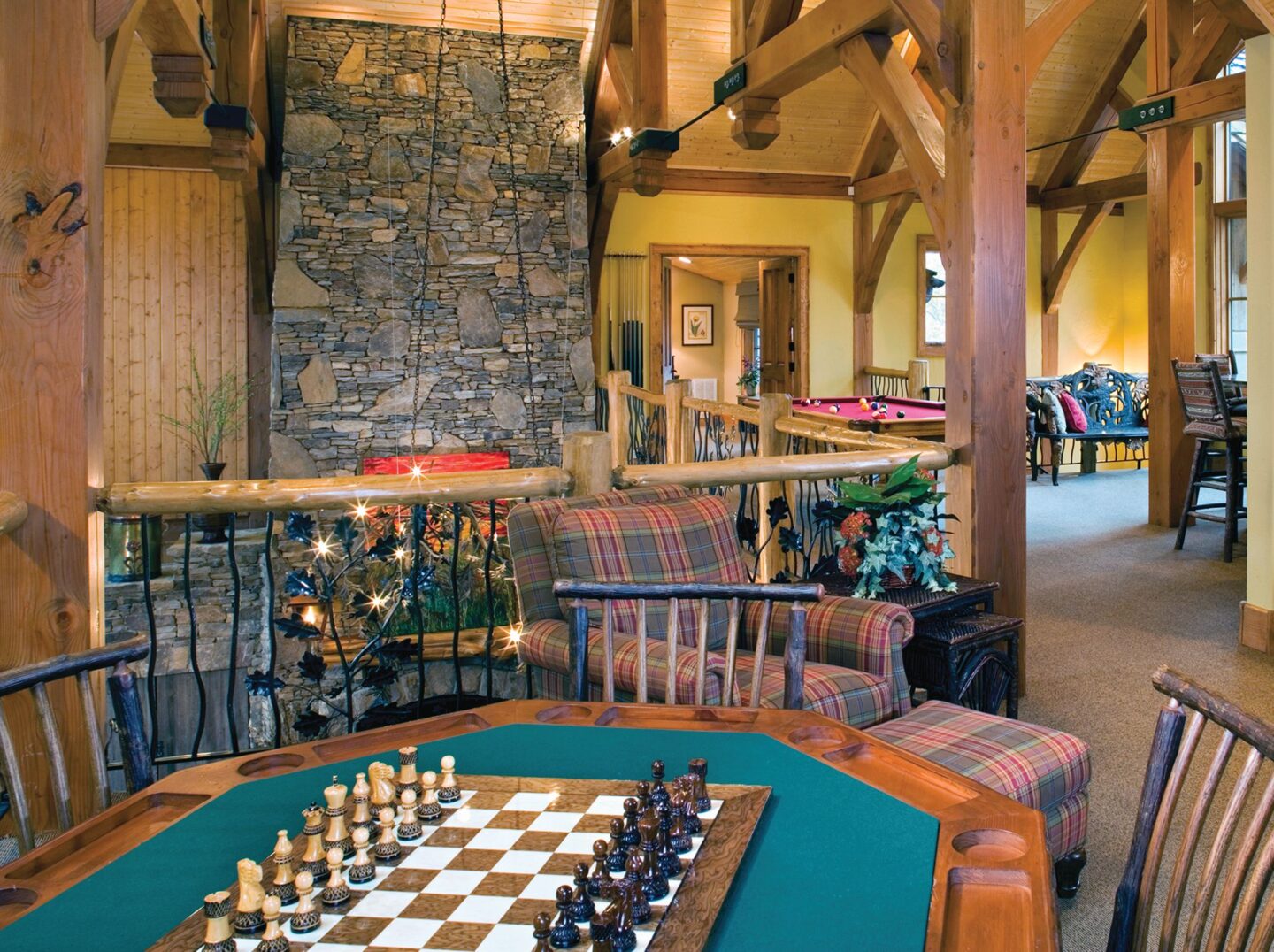If you plan to pass your log and timber home on to future generations, experts provide some key points to consider.
For many of us, the opportunity to build a log or timber frame house is the realization of a lifelong dream. But what makes a house a home is the people we share it with and the memories we make there. That’s why it’s no surprise that many people build their log or timber frame home with the intention of passing the home on to future generations. If that’s your plan, there are some design considerations to keep in mind so that you build a home that will appeal to the whole family and be as cherished in a generation as it is today.
Room for Everyone
You don’t have to build a huge house, but there should be extra space for changing family needs—a bunkroom for grandchildren or a bonus room over the garage that could be converted to a bedroom. “A lot of our clients are people building a legacy home to pass on to their family,” says Celeste Haase, design manager for PrecisionCraft Log & Timber Homes in Meridian, Idaho. “We make sure there’s adequate space for the family, possibly a second master or a bunkroom, a bigger dining room for holiday celebrations.”
“In previous eras, families built cabins that were quite small, but those are being torn down now,” says Allen Halcomb, president of MossCreek in Knoxville, Tennessee. “Empty nesters want to build places that their children and grandchildren will want to come back to and they hope to one day pass their homes on to future generations.” Halcomb recommends a layout where multiple generations can be together at once, comfortably—an open floor plan, with flexible seating areas so it never feels crowded.
“A walk-out basement can be fantastic if your site affords that because you can create a secondary den for the younger folks to hang out in,” says Halcomb. “There could be a Super Bowl game going on downstairs, while the upstairs remains free for quieter activities.” If your site doesn’t afford a basement, other options are a big bonus room over the garage or a playroom on the upper level. “The key is to have more than one gathering space so that when the activities are not compatible with each other or you have a big group, everyone has a place to go,” says Halcomb. “You can accommodate everything from roller skating in the basement to reading in the loft.”

Go for Timelessness, Not Trends
“The architectural theme is interesting in a legacy home because the whole notion of style is temporary,” says Halcomb. So how do you build style that is enduring? Lean on historical styles that have been timeless—Craftsman, Adirondack, or Smoky Mountain are just a few historical styles that have lasting appeal. “They are nostalgic, they bring up a positive feeling,” says Halcomb.
If you want to have a little bit of today’s aesthetics in your home, there are styles that are clearly current—mixing materials, contemporary or modern mountain—that can be blended with some of the historic traditions. “It still pays homage to a style that has stood the test of time, but the newer elements that will age gracefully are a way to put your own personal spin on the home,” says Halcomb. “A house that is rooted in historical styles with elements from today’s life will always be appealing.”
A good design will always take lifestyle into account. “Sometimes people will ask for something that’s dated,” says Haase, who will try to steer them away from design concepts that will not remain current over time. “We don’t see a lot of formal dining rooms anymore, for example,” she says. “Things are more open concept now. It can be cyclical, but we plan for how people will be living in the spaces.”
You can’t go wrong if you stick to natural finishes and materials. Metal, wood, and stone always look beautiful—and timeless—in log and timber frame homes. “Natural finishes speak to generations after time,” says Haase. At the same time, if you have painted finishes you have the advantage of being able to change the paint color if styles or personal tastes change.
Don’t Skimp on Quality
Investing in high-quality materials, from the roof right down to the flooring, will help ensure your home will be enjoyed by future generations while keeping ongoing costs manageable. Higher quality materials will not require as much upkeep, are often more energy-efficient, and won’t need to be replaced as frequently, if at all.
This is especially important in regions with harsh winter weather or intense summer heat. “A lot of our homes are in higher elevations with a lot of snow,” says Haase. “We design with higher quality, more durable materials, like structural insulated panels (SIPs) so the home will last and be more comfortable over time.”
Include a Personal Touch
While you want to avoid finishes or design that will look dated, don’t be afraid to put your personal spin on things. Whether that means building a reading nook filled with family literary favorites or using a nautical theme for a seafaring family’s décor, personal touches imbue the home with memories that will be valuable to your family down the road.
Haase recalls working on a lakefront home in Texas that included personal touches that were a nod to family memories. As Disney fans, they hid Mickey Mouse items throughout the home, so that when their children grew up and came back with their own families, they could point to them and share their memories.

